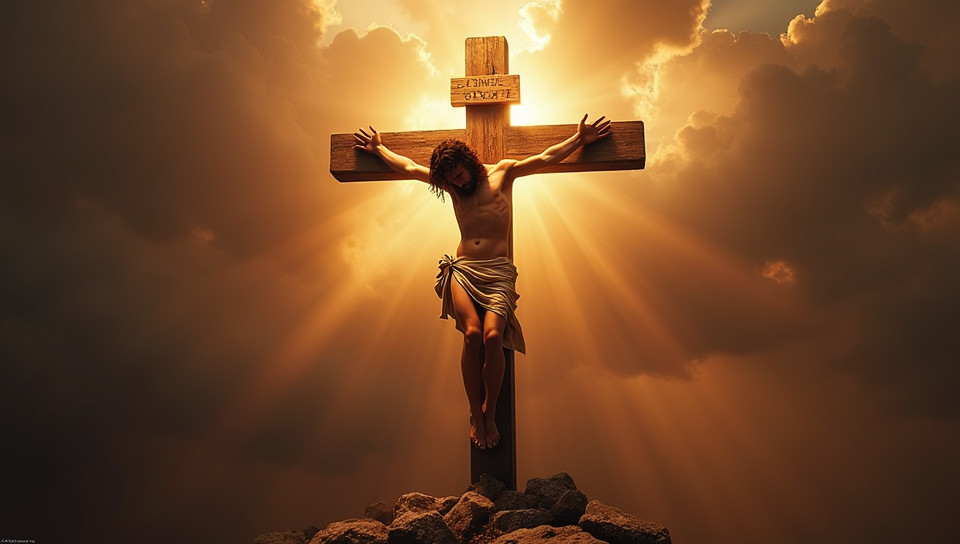The cross represents Jesus' crucifixion and resurrection 61%

The Power of the Cross: Unlocking Jesus' Sacrifice
In a world filled with symbols and icons, one image stands out as a powerful representation of hope, redemption, and sacrifice: the cross. For Christians around the globe, the cross serves as a potent reminder of Jesus Christ's ultimate act of love and selflessness. But what does this symbol truly represent? Let's delve into its significance and explore how it tells the story of Jesus' crucifixion and resurrection.
The Crucifixion Story
The story of Jesus' crucifixion is one of the most well-known narratives in human history. According to biblical accounts, Jesus was betrayed by one of his twelve apostles, Judas Iscariot, for thirty pieces of silver (Matthew 26:14-16). He was then arrested, put on trial, and sentenced to death by crucifixion – a brutal form of punishment used by the Roman Empire.
The Cross as Symbol
So why did Jesus choose to die on a cross? What significance does this particular method of execution hold? The answer lies in its stark contrast to the symbol of life and fertility that was prevalent in ancient cultures. In those times, crosses were often associated with trees, which represented eternal life and renewal.
However, the Roman Empire perverted this symbol by using it as a tool for torture and execution. By choosing to be crucified on a cross, Jesus took something inherently evil and turned it into an instrument of redemption. This act not only reflected his willingness to sacrifice himself for humanity but also served as a powerful commentary on the nature of sin and salvation.
The List of Meanings
- Death to sin: Jesus' crucifixion represented the ultimate defeat of sin and its hold on humanity.
- Hope for eternal life: Through his resurrection, Jesus offered believers a promise of eternal life and hope beyond death.
- Forgiveness and redemption: The cross symbolizes God's willingness to forgive humanity's transgressions and offer redemption through faith in Jesus.
Resurrection and New Life
But the story doesn't end with Jesus' crucifixion. Three days after his burial, he was resurrected from the dead, demonstrating the power of God over death and sin (1 Corinthians 15:3-4). This miraculous event marked a turning point in human history, as it offered believers a new hope for eternal life and a chance to start anew.
Conclusion
The cross represents more than just a tragic event in Jesus' life; it embodies the very essence of his sacrifice, love, and redemption. As we gaze upon this symbol, let us remember the depth of Jesus' love for humanity and the transformative power of faith in our lives. The cross is not just a relic of the past but a beacon of hope for those seeking forgiveness, renewal, and eternal life.
- Created by: Daniel Ciobanu
- Created at: Feb. 17, 2025, 7:40 a.m.
- ID: 20323